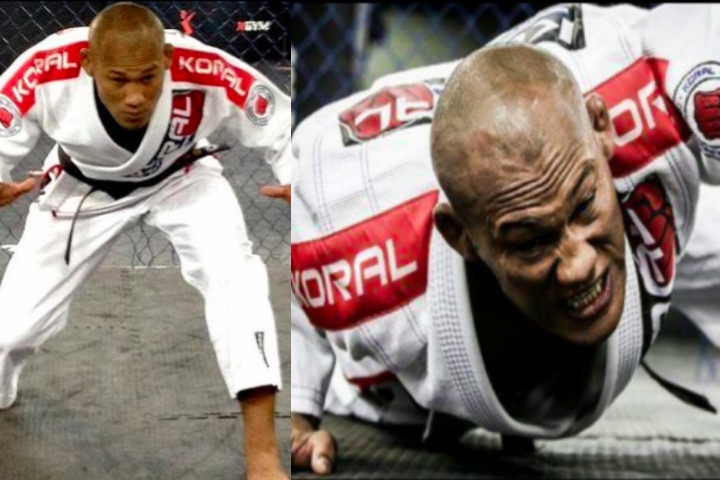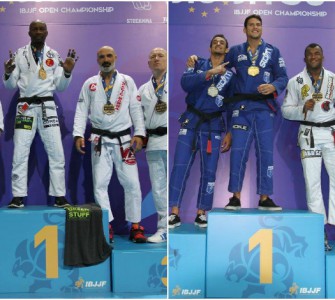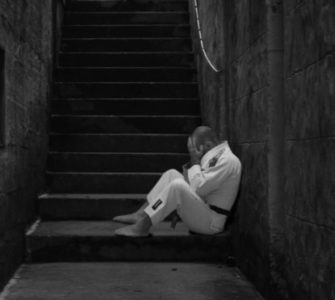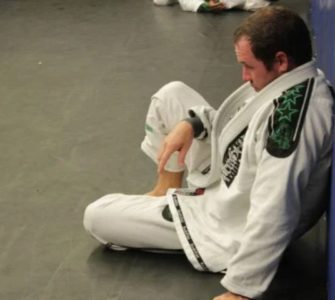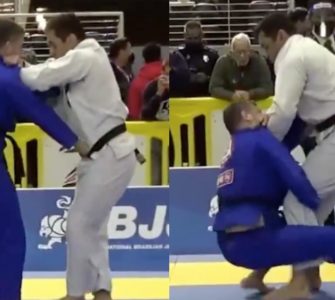Guest post by Neil Adams MBE, an English judoka who won numerous Olympic and World Championship medals in judo representing Great Britain. Adams was the first British male to win a World title, and the first British male to simultaneously hold a world title and a European title. Other achievements include a gold medal at the 1981 World Judo Championships in Maastricht, the Netherlands, plus silver medals in the 1980 and 1984 Summer Olympic Games and the 1983 Judo World Championships. Adams was also five-time European Champion. On 20 September 2008 he was promoted to 8th Dan at the age of 49. He is famous for his ground game (ne waza) and his arm lock (that won him the world championship).
Adams has released a new series of Judo instructional entitled ‘Essential Judo‘ which is a revolutionary & highly detailed way of teaching the art of Judo.
There are many different forms of balance that we need to consider when training for martial arts. Your first thought is how well do we stand on one leg?
Or you could think am I balanced in my training? Do I have my mental balanced with my physical?
Having a work-life balance is so important for life itself and this, in turn, reflects on so many other aspects of our lives. If we are training for a particular sport for example and we don’t have a good life balance, it affects our preparation, which in turn affects our performance. We perform to our optimum levels when we have a stable home life and well-balanced progressive preparation.
So often poor performances can be attributed to many things including relationship problems, money problems or just a simple lack of proper skilled training.
Many of these things can be improved and developed in a positive manner with good, solid planning and organisation.
When it comes to the question on everyone’s lips at the moment regarding how to balance the Standing and Groundwork in Judo and BJJ, we have to look at the two sports from two different angles.
One being from the top, down, and the other from the bottom, up, and hopefully find a commonality that can help both progress.
Of course they are both very similar in the fact that we need to practice one-to-one with an opponent, we both wear gis, and we train on similar style mats. In my experiences, the ethics and ethos in traditional dojos, both sports hold dear the principals of Honour, Respect, Courtesy, and Etiquette. So where do they differ and how can we work off each other to improve our individual games?
For me as a Judoka, I like to believe that my skills in Newaza (groundwork) and my skills in Tachiwaza (standing work) are reasonably even in both levels of skill and application.
This was not always the case though.
As a junior transitioning through to senior level of competition my standing was more prominent than my groundwork. I would go as far as to say 70% in favor of standing. I preferred to throw more than transitioning down to the ground.
I then got caught on the ground in the final of a major competition and was so mortified by this, that I vowed that it would never happen again.
I started to train more intensely on the ground and started to develop strong armlocks and strangles. I also realised at this stage just how important the transition process was, going from a throwing situation to the ground, and I endeavored to work really hard on the smooth process from my standing game down to my mat game.
This was also so important because the rules of Judo were such that if transition was not smooth or progressive then both fighters were stood up after only a few seconds of groundwork fighting. I would say that this situation had a knock-on effect to the development and training of groundwork in Judo with a coach’s mindset turning to the question of ‘why coach it if we can’t use it in competitions’?
One of the many rule changes that have had a really positive effect on the balance of Judo development worldwide is a simple but very effective one.
After long discussions with both top level referees and coaches, it was agreed that by giving more time on the ground for techniques to develop, that it would encourage coaches to train more specifically in groundwork and to teach the skills in more detail.
This really has turned Judo on its head and although we are still not quite there yet, certainly the difference of standing to groundwork in competitions and training has changed positively. It is definitely more balanced now. It is going in the right direction.
BJJ has developed so much in the other direction that they have definitely taken groundwork into another stratosphere. Their groundwork to standing is probably 70% to 30% the other way to that of Judo.
So we might ask the question as to why BJJ needs to improve their standing work? It is a different sport to Judo after all, and it concentrates mainly on submission moves on the ground.
Hear me out for a moment as I’m hoping to feed you all a tiny bit of food for thought. Most of the top Jiu-Jitsu fighters that I have spoken to have stated that they deem it very important to improve their standing game. Just throwing one’s body down to the ground and pulling your opponent downwards into a groundwork situation does not always give the best opportunity for specific moves. You can’t necessarily control the reaction you need to start your portfolio of techniques.
Multi World Champion Roger Gracie is one of these practitioners who realised that he had to adjust his balance of groundwork to standing work. So much so, that he works very closely with Judo Olympic silver medalist Ray Stevens, a Judo 7th Dan and BJJ 2nd Dan in order to train and develop his throws and transition.
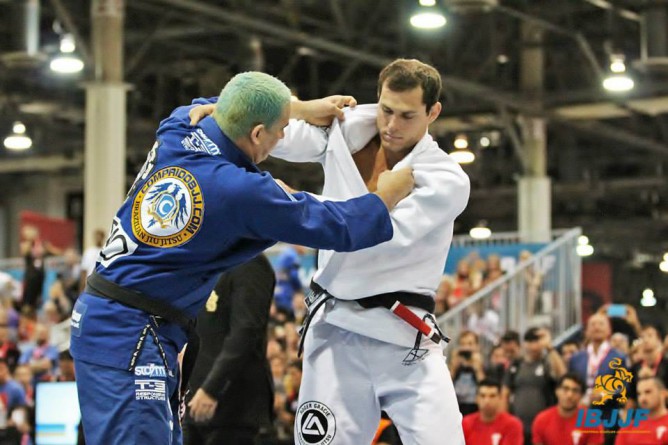
Two great Champions working together to improve their games and to address their balance of play.
Think how much it might change BJJ’s development in their throwing strategies if one very simple rule change was implemented to their sport as it was to Judo. Stay with me here….imagine that they were not able to just jump into the guard from a standing position but had to throw progressively into their ground game?
They would have to improve their throwing ability and train for the transition more specifically into groundwork, as well as have control over, to some degree as you will have trained it for the reactions of your opponent. Just an idea but one that might spark a different training direction.
Why improve their throwing when Ju-Jitsu is more prominently groundwork than standing? Well for one thing both sports start from a standing position and both go to the ground. We all know how important the start is for all games. I’ve always said, “They who control the grips, controls the fight.” Be in control of the situation, know your game plan, be first always.
One thing that is very important though, is that both sports can learn from each other and will prosper because of it.

